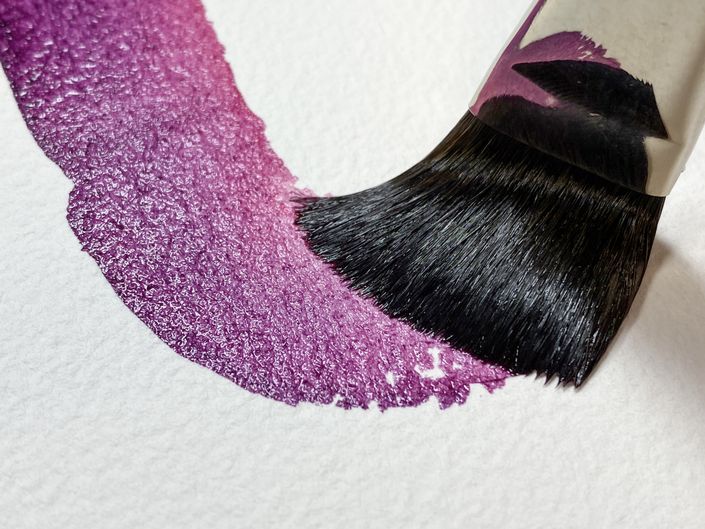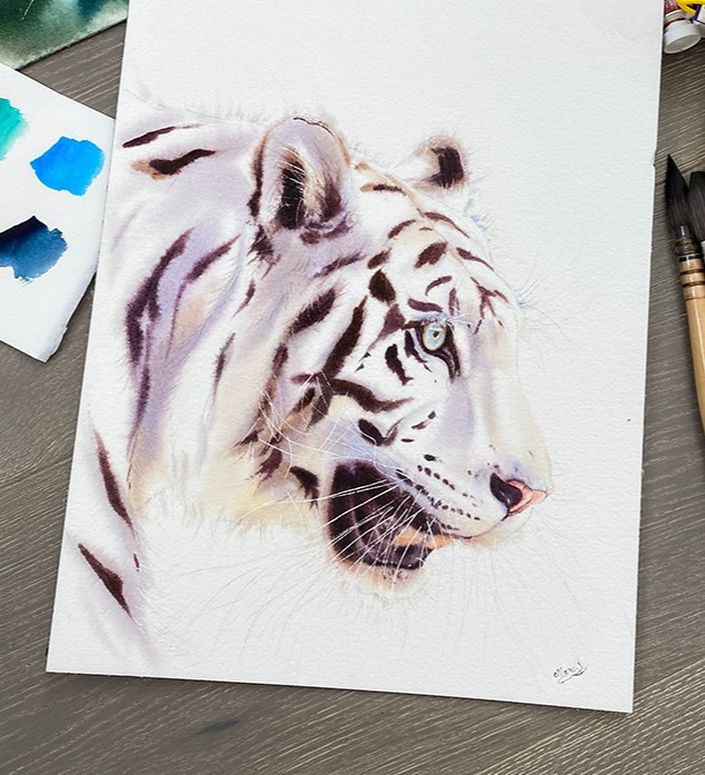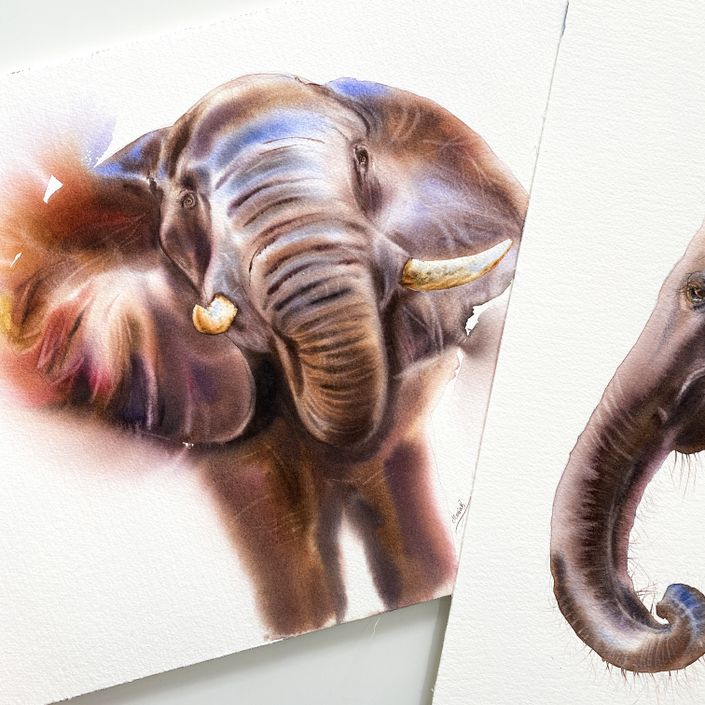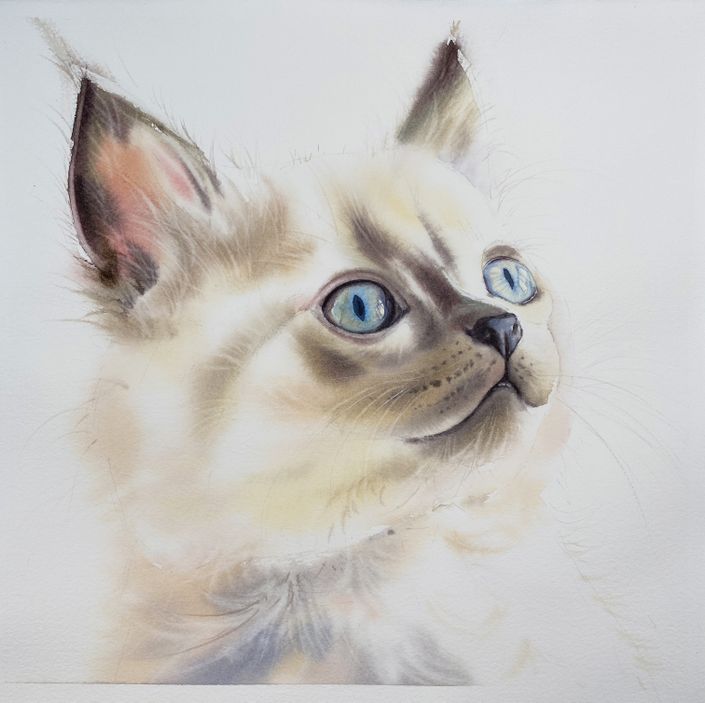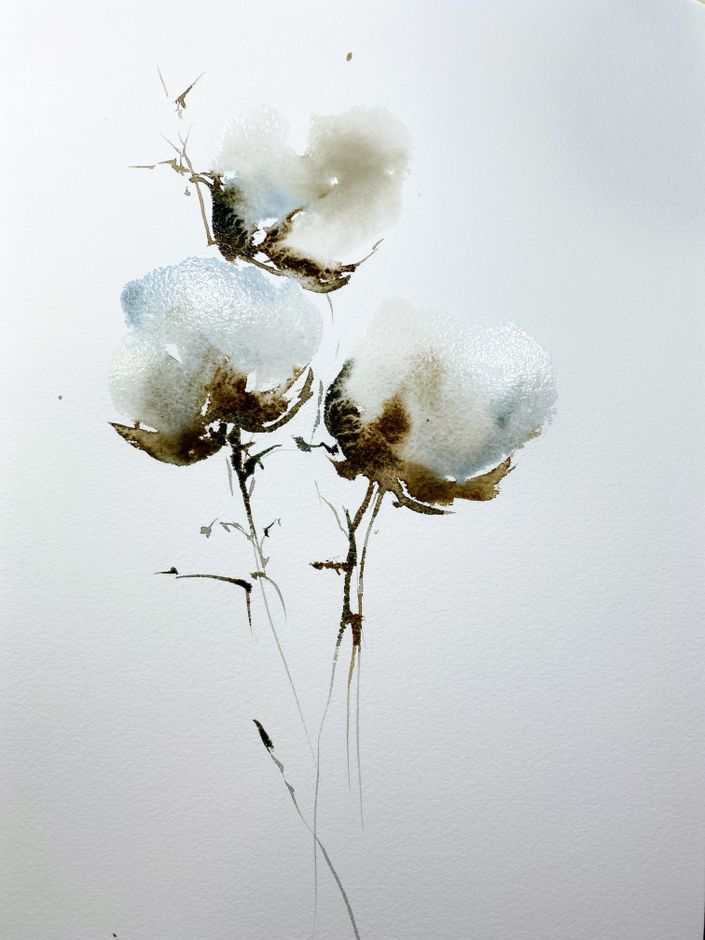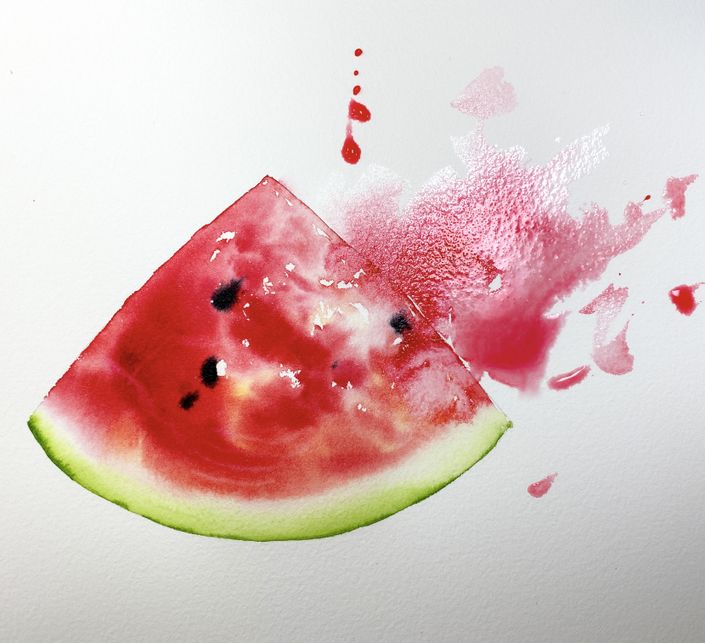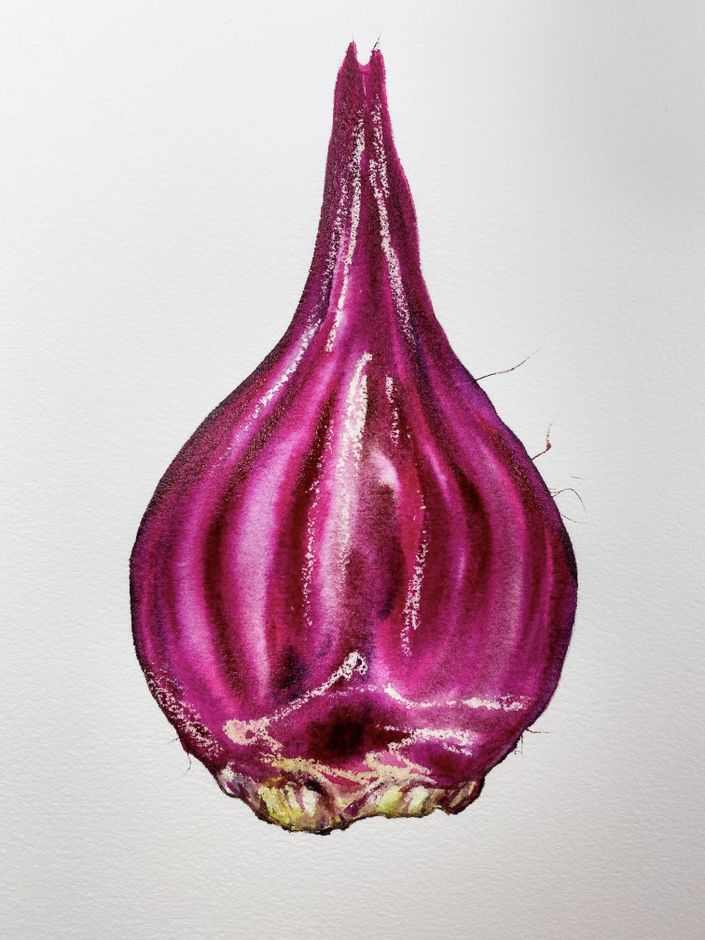Welcome!
Choose this class if you are interested in learning how to paint this white horse in watercolor.
If you choose the bundle option "ALL YOU CAN PAINT", you will only pay $20 a month and have access to every single class in this school!
*You can cancel anytime!
*If you join the subscription plan, 30 days start from the date you have enrolled.
Scroll down to the bottom to see pricing plans and a free preview.

Painting a white object in watercolor
Whether you are painting a white rose, a white door, or a white rabbit, the color palette in watercolor can be extremely simple. All you need is yellow, blue and red. I will be teaching you in this class, how to paint a white object with just primary colors.
I will be also teaching you how to apply colors wet on wet; what is the best ratio between water and paint; how to wet the entire paper or just a small section of the paper, so you have the most control, and how to lift colors - if needed.
It's important to visualize where you are going to apply the colors. This is when light and shadows become the most important.
I will be teaching you how to plan this ahead, so you feel comfortable with wetting the object, and to think of all the areas where (and why) you are going to apply certain colors, starting with undertones, the lightest colors first.
I can't wait to share all the tips with you.
Hi, I’m your watercolor teacher!
After starting two online schools (first on Patreon and later on Teachable), I wanted to create a membership-based school with more detailed classes. Something a lot more affordable and with a broader choice of subjects.


Examples of some of my other work including animals.

Nuthatch
The background and the bird were mostly painted wet on wet.

Ginger cat
The cat was painted wet on wet, except for a couple of details over the eyes and the nose. For the whiskers - I used masking fluid for watercolors.
All my 'whites' are coming from the paper.

Goldfish
This is another example of my 'wet on wet work.

Detailed vs loose
This rose is more detailed. I painted each petal separately. However, a flower can be painted loose, for example, you can 'wet the entire paper first, then apply colors only towards the petals. You can add a second layer for more definition, or keep things loose.

Magnolia - wet on wet
Most of my work is done 'wet on wet. Wet on wet allows for achieving a smooth layer, and soft results. Colors aren't as important, it's always about light and shadows. In this flower, I kept the tops much layer, and the darkest values were placed on the bottom of the flower.

My second version of "Blossom cherries"
I painted these flowers three times.
The first version was my test piece, so my directions would be more clear while recording the class. I also wanted to decide about the background - lighter or more vibrant.
The second painting was a class, but I wasn't too in love with the more intense background, so since I really enjoyed painting these blossoms anyways, I decided to re-record the class, but this time, to paint the background much lighter, just like in the reference image.

1 layer vs 2 layers
I usually paint fruits with about two layers, that's because when you add that second layer you create more vibrancy, and your object looks more realistic. The lemon above is two layers, however, the foliage is one layer only, which is why I was able to lift colors without any issues, plus other factors such as what colors and what watercolor paper I used.

1 layer apple
The apple above is a class on Patreon, it was painted with one layer only. I was tempted to add a second layer, but this class is marked beginner-intermediate level. I wanted to keep things simple. Regardless, I was still able to create a nice vibrant apple, how is that? Because I began with undertones. Something I will be teaching in this class.

2 layer plums
These plums are two layers, also to create more vibrancy. I could have easily left them with just one layer, but I also knew that with the second layer, you are not only adding more vibrancy but you are polishing the layer, it becomes smoother and softer, this is why I often go for the second layer.
Course curriculum
Choose the bundle option "ALL YOU CAN PAINT" with a $20 per month subscription and you will have access to every single class in this school.
Featured classes
You can enroll in an individual class, or sign up for a monthly membership to have access to all.

